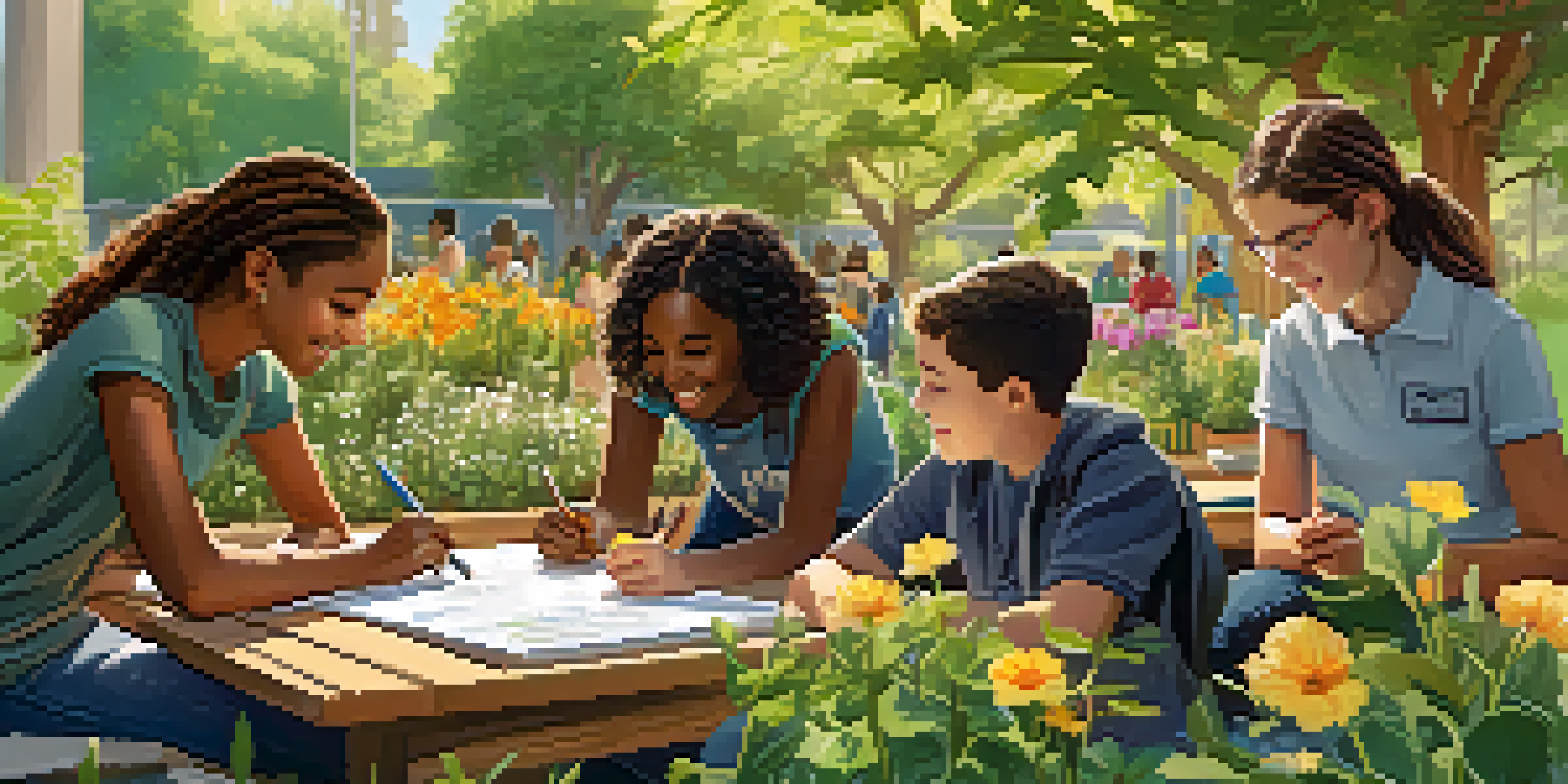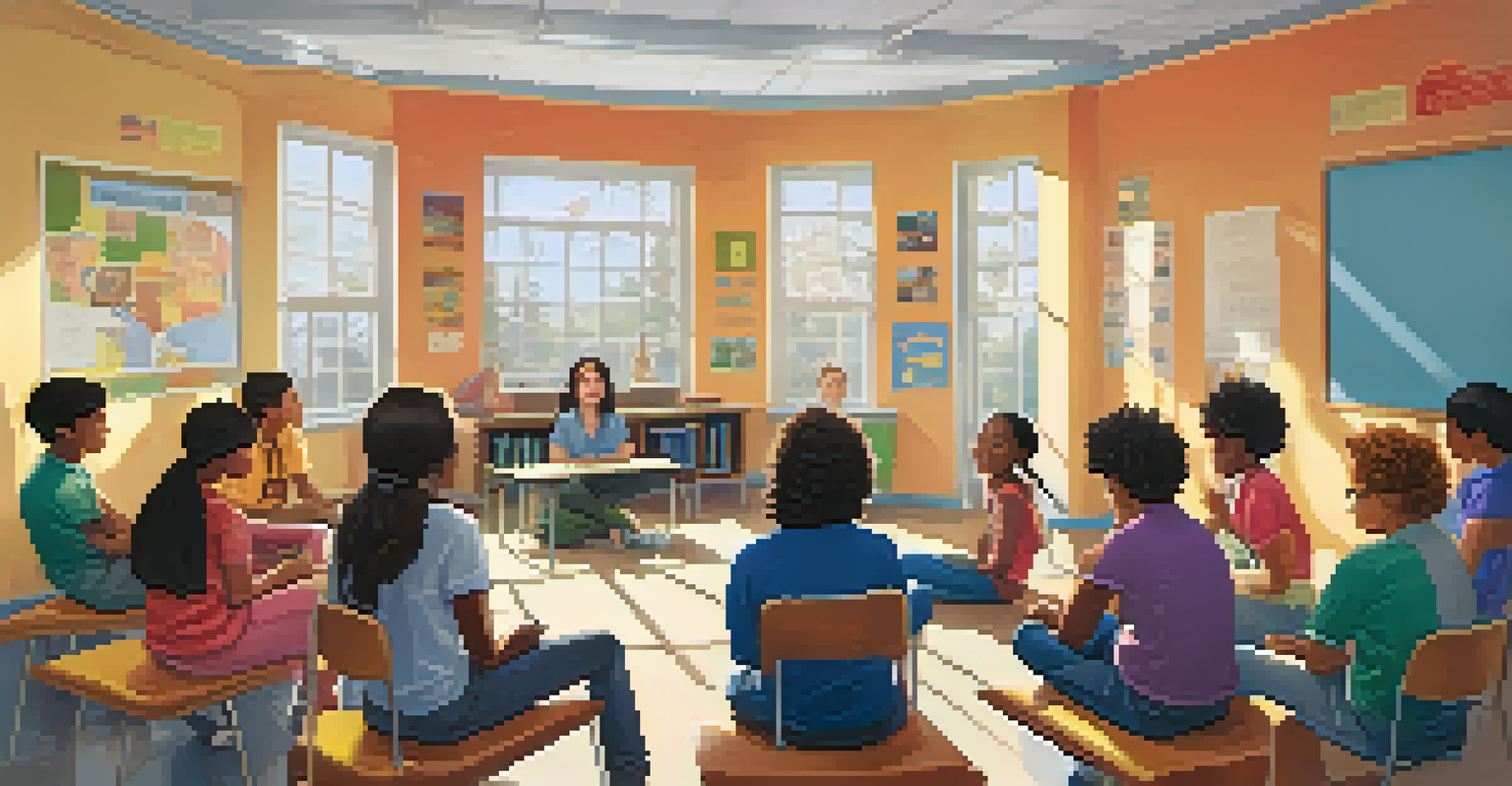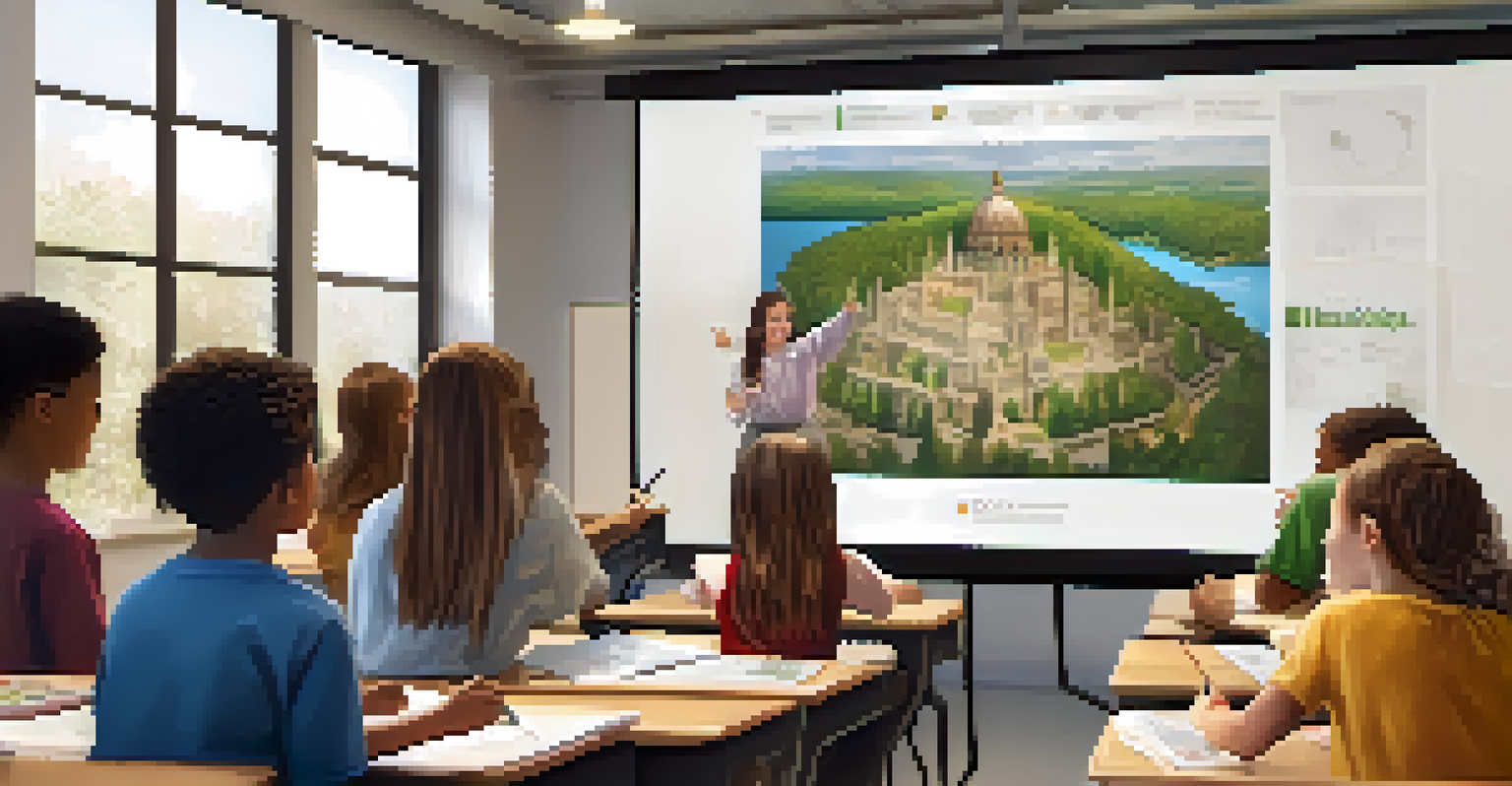Creating Authentic Learning Experiences within Curriculum Design

Understanding Authentic Learning and Its Importance
Authentic learning refers to educational experiences that are relevant and applicable to real-world situations. This approach encourages students to engage deeply with the material, making the learning process more meaningful. It emphasizes critical thinking, problem-solving, and collaboration, skills essential for success beyond the classroom.
The greatest sign of success for a teacher is to be able to say, 'The children are now working as if I did not exist.'
Imagine a student learning about ecosystems by actually conducting field research instead of just reading about it in a textbook. This kind of hands-on experience not only enhances understanding but also fosters a sense of ownership over their learning. When students see the direct application of their studies, they are more likely to retain information and develop a lifelong love for learning.
Incorporating authentic learning into curriculum design isn't just beneficial for students; it also makes teaching more rewarding. Educators can witness firsthand the growth and enthusiasm of their students, creating a vibrant classroom environment where everyone is eager to learn.
Identifying Real-World Connections in Curriculum Topics
To create authentic learning experiences, educators must first identify real-world connections within their curriculum. This means looking for ways to tie academic concepts to everyday life, current events, or community challenges. For example, a math lesson could involve budgeting for a community event, making the subject more relatable and engaging.

By anchoring lessons in real-world contexts, students can see the relevance of what they are learning. This approach prompts them to ask questions and seek solutions, driving curiosity and motivation. It transforms passive learning into an interactive process where students are active participants in their education.
Real-World Connections Enhance Learning
Linking curriculum topics to everyday life makes learning more relevant and engaging for students.
Moreover, connecting curriculum topics to real-life scenarios helps students develop critical thinking skills. They learn to analyze situations, consider various perspectives, and apply their knowledge to solve complex problems, preparing them for future challenges.
Incorporating Project-Based Learning for Engagement
Project-based learning (PBL) is an effective method for creating authentic learning experiences. In PBL, students engage in a project that addresses a real-world problem, allowing them to apply their knowledge in a practical setting. This type of learning encourages collaboration, creativity, and communication among students, essential skills for the 21st century.
Tell me and I forget. Teach me and I remember. Involve me and I learn.
For instance, a group of students might work together to design a sustainable garden for their school. This project not only teaches them about biology and ecology but also instills a sense of responsibility and teamwork. As they navigate challenges and celebrate successes, students gain valuable insights that extend beyond the classroom.
Additionally, PBL allows for differentiation, as students can approach tasks in various ways based on their interests and strengths. This flexibility fosters a sense of ownership in their learning journey, encouraging them to take initiative and be accountable for their education.
Utilizing Technology to Enhance Learning Experiences
In today's digital age, technology plays a crucial role in creating authentic learning experiences. It provides students with access to a wealth of resources and tools that can enhance their understanding of complex concepts. For instance, virtual field trips can transport students to historical sites or natural wonders, sparking curiosity and engagement.
Moreover, technology facilitates collaboration among students, even when they are miles apart. Online platforms allow them to work together on projects, share ideas, and provide feedback, fostering a sense of community and teamwork. This connectivity mirrors the collaborative nature of the workforce, preparing students for future careers.
Project-Based Learning Drives Engagement
Engaging in real-world projects fosters collaboration and critical skills essential for students' future success.
However, it’s essential to strike a balance in technology use. While it can enhance learning, it should not replace hands-on experiences. Combining technology with traditional methods can create a rich and diverse learning environment that caters to various learning styles.
Creating Safe Spaces for Open Dialogue and Inquiry
For authentic learning to flourish, students must feel safe to express their thoughts and questions. Creating a supportive classroom environment encourages open dialogue and inquiry, allowing students to explore ideas without fear of judgment. This sense of security fosters deeper discussions and critical thinking.
Consider a classroom where students feel comfortable sharing their opinions on societal issues. This kind of atmosphere not only validates their feelings but also encourages them to think critically about different viewpoints. As they engage in discussions, they learn to articulate their ideas and respect the opinions of others.
Furthermore, teachers play a vital role in establishing this safe space. By modeling active listening and encouraging respectful discourse, educators can guide students in navigating complex conversations. This approach helps build a community of learners who support each other in their educational journeys.
Assessment Strategies to Reflect Authentic Learning
Traditional assessment methods often fall short of capturing the depth of student learning in authentic contexts. Therefore, it's crucial to implement assessment strategies that reflect real-world applications of knowledge. For instance, rather than just giving a final exam, consider using portfolios or presentations that showcase students’ projects and learning processes.
These alternative assessments allow students to demonstrate their understanding in creative ways. They can illustrate their thought processes, reflect on their challenges, and showcase their accomplishments, providing a more holistic view of their learning journey. This approach also encourages self-assessment and critical reflection, helping students take ownership of their education.
Technology Enriches Learning Experiences
Utilizing technology alongside traditional methods creates diverse and interactive learning environments.
Moreover, involving students in the assessment process can enhance their engagement. By allowing them to set personal learning goals and evaluate their progress, you empower them to take an active role in their education, fostering a deeper connection to the material.
Fostering Lifelong Learning Through Authentic Experiences
The ultimate goal of creating authentic learning experiences is to foster a love for lifelong learning. When students engage in meaningful, real-world tasks, they develop a sense of curiosity that extends beyond the classroom. This intrinsic motivation encourages them to seek knowledge and experiences throughout their lives.
For instance, a student who participates in a community service project may discover a passion for environmental advocacy. This experience can lead them to pursue further education and involvement in related fields, illustrating how authentic experiences can shape future aspirations.

By prioritizing authentic learning, educators lay the foundation for students to become proactive learners. They learn to seek out new challenges, embrace change, and continuously grow, equipping them with the skills needed to navigate an ever-evolving world.